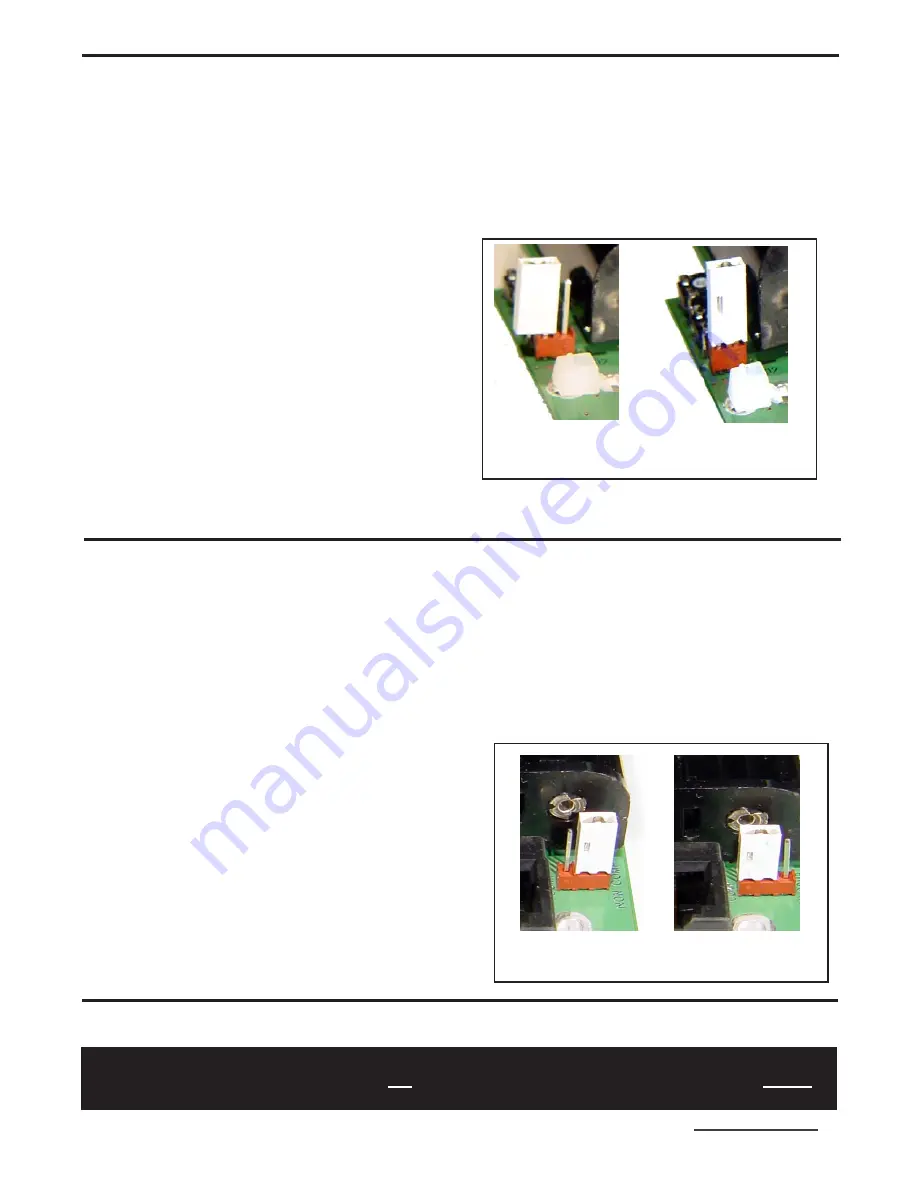
For assistance, call RITRON at 800-USA-1-USA (800-872-1872) or visit us at www.ritron.com
qtm9322b.pm5
9
The
Quick Assist II
offers selectable compressed or
non-compressed transmitted audio. Some manufactur-
ers call this feature X-pand or Companding. The
Quick
Assist II
must match your existing 2-way radios for
optimal quality. To determine if your existing 2-way radios
are using companding you can call the manufacturer of
the radio, refer to your owners manual or call Ritron for
help.
If you are unable to determine if your 2-way radios are
using the companding feature, we suggest you take the
following logical steps:
1.
Leave the jumper in the factory default setting
NON-
COMP
.
2.
Activate the transmitter of the Quick Talk or Quick
Assist (I or II) and listen to the message from your
portable radio. If the received audio is acceptable, skip
the rest of this section, if its not acceptable continue to
step #3.
3.
Change the jumper setting to the
COMP
position and
activate the Quick Talk or Quick Assist (I or II)
transmitter again, and listen to the voice message.
Place the jumper in the setting that produces the best
received audio message in the radio you will be using.
Selecting Compressed or Non-Compressed Transmitted Audio
Compressed
Not-Compressed
FIG4. POSITION FOR NOT-COMPRESSED/
COMPRESSED AUDIO
Not-Compressed: (Refer to FIG-4)
To set the
Quick Assist II
for standard audio or not-
compressed, place the jumper so that the middle pin and
the pin closest to the word NON-COMP are covered by
the jumper.
Compressed: (Refer to FIG-4)
To set the
Quick Assist II
for compressed audio, place the
jumper so that the middle pin and the pin closest to the
word COMP are covered by the jumper.
I M P O R T A N T
You may change the Transmitter Bandwidth and Compressed/Non-Compressed Audio jumper settings without
re-recording your custom voice message.
The
Quick Assist II
offers selectable bandwidth Wide or
Narrow. The
Quick Assist II
must match the bandwidth
setting of your existing 2-way radios for optimal quality.
As a general rule, if the operating frequency of your radios
has
less
than three numbers to the right of the decimal
point your frequency is Wide band.
Example: frequency 154.570 MHz or 462.625 MHz
If
more
than three numbers to the right of the decimal
point, your frequency is most likely Narrow band.
Example: frequency 467.7625 MHz or 467.8125 MHz
To determine your operating frequency and bandwidth
check your 2-way radio, yourowners manual, or call Ritron
for help. You can also look for your frequency and corre-
sponding bandwidth/channel spacing in the table listed on
page 7 of this manual.
If you are unable to determine if your 2-way radios are
Narrow or Wide band, we suggest you take the following
logical steps:
1.
Leave the radio in the
Wide
band factory default mode.
2.
If the received audio is acceptable, skip the rest of this
section, if its not acceptable continue to step #3.
3.
Change the jumper setting to
Narrow
and listen to the
voice message.
Place the jumper in the setting that produces the best
received audio message in the radio you will be using.
FIG3. J102 SETTING FOR NARROW OR
WIDE-BAND OPERATION
Narrow-Band
Wide-Band
Selecting Wide (25kHz) or Narrow (12.5kHz) Bandwidth/Channel Spacing
Wide: (Refer to FIG-3)
To set your
Quick Assist II
into wideband position, place
the Transmitter Bandwidth Select Jumper so that both
pins of the 2 pin connector are covered by the jumper.
Narrow: (Refer to FIG-3)
To set your
Quick Assist II
into narrowband position, place
the Transmitter Bandwidth Select Jumper so that only 1
pin of the 2 pin connector is covered by the jumper.
















